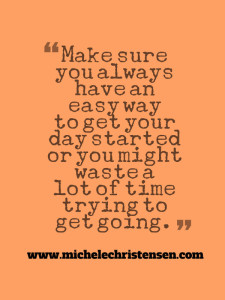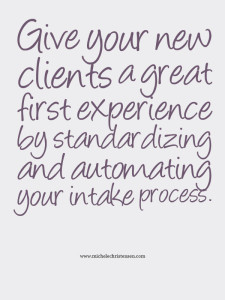In this video, I answer the question “How can I possibly add one more kind of marketing to my schedule when I already do so much?”
If you like this post, please use the Pin It and social share buttons and let me know what you liked in the comments.
Business Strategist for Solopreneurs
 I’m a big believer in the power of email marketing and listbuilding. Whenever this topic comes up, the topic of list size also comes up. Some people have list size envy or even list size shame. Many times, when you first attempt to partner with someone list size is one of the first topics on the agenda.
I’m a big believer in the power of email marketing and listbuilding. Whenever this topic comes up, the topic of list size also comes up. Some people have list size envy or even list size shame. Many times, when you first attempt to partner with someone list size is one of the first topics on the agenda.
The problem is that “How big is your list?” is the wrong question to ask, especially if it’s the only one you ask. Why is this the wrong question to ask?
It’s the wrong question because it doesn’t give you the information you really want, which is “How many people are likely to see an email you send?” What you really want to know is “How many people typically open your emails?” That’s what will tell you how many potential customers could be reached.
Here’s an example:
A person with a list of 10,000 and an average 20% open rate will give you an average of 2,000 people opening and potentially reading an email. A person with a list of 20,000 but an 8% open rate will only have an average of about 1,600 people opening their emails. If you stopped at “How big is your list?” you would probably choose the person with the bigger list to partner with. It’s not until you explore how many people actually open emails that you realize that the person with the smaller list has a better chance of getting more people to open an email.
So, stop obsessing over list size! It’s the number of people who read the email that matters. Start paying as much attention to how many people open your emails as you do to how big your list is. When it’s time to work with someone else, make sure to ask the right questions of them as well.
Want more great information on listbuilding and email marketing? Sign up for a free video training at Get Your List Growing.

Sometimes, it can feel like you are alone in your solopreneur business. Sometimes, people don’t think it’s a “real” business because you don’t have a location or employees. As this article shows, we are everywhere and our numbers are growing!
Want to get the word out about the fabulous solopreneur lifestyle? Use the social sharing buttons or leave a comment below.
 It can be hard to get your day started when you are a solopreneur! There’s so much to do in so many different categories, and then there’s all your personal stuff too. If you don’t have enough structure, that wide-open schedule might be as much a curse as a blessing. One way I get started right is to have a kick-start that I do every day. No matter how overwhelmed and lost I might feel, I always know to go through this short list and then I will have at least gotten started.
It can be hard to get your day started when you are a solopreneur! There’s so much to do in so many different categories, and then there’s all your personal stuff too. If you don’t have enough structure, that wide-open schedule might be as much a curse as a blessing. One way I get started right is to have a kick-start that I do every day. No matter how overwhelmed and lost I might feel, I always know to go through this short list and then I will have at least gotten started.
Here’s my kick-start list:
Once I tackled this list, I have a sense of accomplishment and my day is off to a good start. It’s often enough to get my momentum rolling and I can dig into everything else I want to get done. As with so many things, once you get your work day started it’s much easier to keep going than it was to get started.
If the idea of having a set way to start the day doesn’t appeal to you, an alternate approach is to set up the start to your day the night before. As your last task of the day, get yourself organized and set up for the morning so you can jump right in. Either way, make sure you give yourself an easy way to get your day going or you might waste a lot of time just trying to get started.
Like this post? Please use the Pin it and social sharing buttons below.

 One of my big themes for 2014 is narrowing my focus, and one of the areas I’m focusing on is writing Kindle books. I’ve got two published and a third is in the works. One of my books even got to #1 Bestseller status in the Kindle store! In this post, I’m reviewing a Kindle book that has information I used to get my book to #1 Bestseller status:
One of my big themes for 2014 is narrowing my focus, and one of the areas I’m focusing on is writing Kindle books. I’ve got two published and a third is in the works. One of my books even got to #1 Bestseller status in the Kindle store! In this post, I’m reviewing a Kindle book that has information I used to get my book to #1 Bestseller status:
Author’s Quick Guide to Making Your Book a Bestseller
The book’s author is Kristen Eckstein, who is one of my Kindle mentors. I was in her first “Kindle in 30 Challenge” back in January, and from that I was able to get my series “The Solopreneur’s Success Strategy” started.
Here’s the review, in short form: Buy it. It’s well worth the $3.49 price point. If you are writing Kindle books that sell for $2.99, you only need to sell 2 to cover the cost of this book and I’m pretty certain this book will cause you to sell at least two additional books.
If you want more information, here’s the longer review.
Kristen’s credentials for writing this book are extensive and can be found in the beginning of the book. Suffice it to say, she knows her stuff. She covers many areas that will help you become a bestseller including writing a good book, choosing catagories, pricing, using keywords and writing for your specific audience.
One of the great things about this book is that much of what you will learn is applicable to other areas of your business as well. For example, she spends a lot of time on finding your audience and learning to speak their language. That skill is useful in so many areas of your business – when marketing on the web, when speaking from the stage, when creating products or when talking one-on-one with potential customers.
This book was hugely helpful to me and helped me get one of my books that coveted #1 status! My tip: Don’t forget to take a screenshot when your book gets to #1!
Check out the book here:
Author’s Quick Guide to Making Your Book a Bestseller
Like this post? Please use the Pin It and social sharing buttons below to let your connections know about it. Thanks!
Image source: Amazon.com

 This post is the second in a series on website traffic basics. If you want to read part 1, click here. In the first post, I explained the concept of generating traffic to a website. Many new website owners assume that if they create a website that people will visit that site automatically and that’s not the case. In this post, I’ll expand on the concept of website traffic by talking about what you can learn by how long your visitors stay on your site. Not all visitors to your site are equally interested in what you have to sell, and not all visitors will behave the same way on your site.
This post is the second in a series on website traffic basics. If you want to read part 1, click here. In the first post, I explained the concept of generating traffic to a website. Many new website owners assume that if they create a website that people will visit that site automatically and that’s not the case. In this post, I’ll expand on the concept of website traffic by talking about what you can learn by how long your visitors stay on your site. Not all visitors to your site are equally interested in what you have to sell, and not all visitors will behave the same way on your site.
One of the first things to look at when analyzing your web traffic is how long people stay on your site. In general, the longer people stay the more likely they are to take action (e.g. opt in to your email list, sign up for something free or buy something). When people stay on your site for a long time, it’s a good sign that they are interested in what they find there. After all, why would someone stay on a site that they weren’t interested in? Google Analytics can give you statistics on your website visitors in great detail including how long they stay.
A second figure to look at is bounce rates. In Google Analytics, a bounce is when someone clicks on you page and leaves quickly. It’s a good indication that they didn’t find what they were looking for. This is a good figure to compare for various traffic sources and keywords. If people land on your site after doing a search on a certain key word or phrase and then many of them bounce, that means that people searching on that key word or phrase are not finding what they wanted on your page. There could be a great opportunity for you here – fine tune the content of your page to better match what people want. You may also find that traffic from various sources tends to stay on your site for more or less time.
A third figure to look at is what actions people take when on your site. You might want them to opt-in for your email list, sign up for a free event or make a purchase. This is also a way to compare your traffic – you can look at what actions they tend to take while on your site.
In the first post I wrote, I talked about Pinterest and how it is great at driving site visitors. That post focused mainly on how Pinterest was good for driving a good volume of referral traffic. However, Pinterest is also good at driving high-quality traffic. My own experience is that the visitors I get to my site from Pinterest tend to stay longer than visitors from other sources. There is also some great data to support the idea that Pinterest users have a higher tendency to buy than visitors from other sites. In order to learn more about Pinterest and website traffic, you can watch this training I did with Becky Sangha, the creator of Business Marketing with Pinterest. She shares some great tips for using Pinterest and actually accomplishing something, and she also gives her strategy for using Pinterest in just 10 minutes per week! You can get a lot of traffic and followers in that time, which is a great return on investment. Check it out at the link below:
Pinterest Training for Solopreneurs
Like this post? Please use the Pin It and social sharing buttons below. Thanks!

 When I worked for a big corporation, we had a budget department. It was not a big department, but there were 4-6 people whose sole function was to create and manage the company budget. Because it was a big company, the budget filled a 5-inch binder and there pages and pages documentation to go with it. The budget itself went from a big, broad picture to minute detail about each department within the company. The budget was drafted before the year started, and as the year progressed we measured how well we did in revenue and expenses against the budget.
When I worked for a big corporation, we had a budget department. It was not a big department, but there were 4-6 people whose sole function was to create and manage the company budget. Because it was a big company, the budget filled a 5-inch binder and there pages and pages documentation to go with it. The budget itself went from a big, broad picture to minute detail about each department within the company. The budget was drafted before the year started, and as the year progressed we measured how well we did in revenue and expenses against the budget.
In this setting, the budget served a lot of purposes and most of them aren’t relevant to solopreneurs. However, one of the vital functions of the budget was to justify every expense and make sure someone had the responsibility of deciding how to spend limited dollars. Nobody could just go off and autonomously decide to start some brand new promotion or create a brand new, untested product with no way of knowing if it would sell. While that does make for some slow implementation, it also makes sure that any new idea goes through some sort of review process.
As a solopreneur, you don’t have a budget department. In fact, you don’t have any departments or anyone to report to. This is a fun, phenomenal benefit of a one-person business, but it also means you can grab any half-baked idea you want and run with it. That can be a big problem!
Way too often, I see solopreneurs randomly adding project after project into their business with no planning and no way to measure what’s working. What they end up with is an overwhelming mash-up of disjointed tasks that aren’t working and no way to determine why.
So what’s the alternative? You don’t need a full department to help you stay on track, but you do need to perform the function of the budget department in your business. What if you did have to justify each new expenditure? What if you had to explain all the person-hours you needed? How would that change the way you work?
Here are a few tips to get your “budget department” started:
In short, one helpful way to look at any new project you are thinking of taking on is to pretend you have to justify it to a budget committee. How will it help your bottom line? How will it contribute to sales? If you are thinking of trying something new, and want to set it up properly from the start, I invite you to schedule a coaching session with me. I can help you make sure you are heading in the right direction and that you’ll be able to tell if your project is successful.
Like this post? Please pin and use the social sharing buttons below. Thanks!

 If you provide a service or work with clients, you have some sort of intake process. Even if currently you just grab bits of information as you realize you need them, you still have a process. Once practice I recommend is having a standardized intake process. Aside from saving you time, if you have a set process you’ll avoid re-inventing the wheel every time a new client enters your business. You can design your process to make sure you get all the information you need for each new client, such as their contact information, what name they like to be called, how they like to be contacted, etc. Because the process is standardized, you’ll get the same information in the same format for each new client which lets you hit the ground running. If you process is set up correctly, you can also be sure that each new client is added to your email newsletter list without any intervention from you. Of course always make it clear they are being added to a list during their transaction.
If you provide a service or work with clients, you have some sort of intake process. Even if currently you just grab bits of information as you realize you need them, you still have a process. Once practice I recommend is having a standardized intake process. Aside from saving you time, if you have a set process you’ll avoid re-inventing the wheel every time a new client enters your business. You can design your process to make sure you get all the information you need for each new client, such as their contact information, what name they like to be called, how they like to be contacted, etc. Because the process is standardized, you’ll get the same information in the same format for each new client which lets you hit the ground running. If you process is set up correctly, you can also be sure that each new client is added to your email newsletter list without any intervention from you. Of course always make it clear they are being added to a list during their transaction.
If you already use a shopping cart or Paypal, you can specify what contact data you want from the client when they checkout. Your shopping cart or Paypal should also add the client automatically to your email list. A great next step is to have your client visit an online form where they fill in whatever information you need to get started. You’ll want to make sure whatever form you use is as secure as you need it to be to protect your clients’ privacy. Finally, it’s important that you design your process to be as error-proof as possible. The client should be ushered through easily and flawlessly with no effort on their part. Whatever comes after the intake process should appear at the right moment.
Since you can’t, nor should you be, at your computer 24/7 all of this needs to be set up to happen automatically to create the best experience for your new clients. Making sure client intakes happen smoothly with or without you present is especially important for solopreneurs. The last thing you want is a bad first impression or a customer service situation you need to fix. You also should not set up a situation where you need to be there all the time to start new clients. Fortunately, you can use free or low-cost automation tools and even settings on the tools you already use to make this happen. Automating your intake process is one of the areas of automation I cover in my book The Solopreneur’s Success Strategy: Automate Your Grunt Work. In the book, I cover 10 key areas where you can use automation to deliver better service and more of yourself without adding more to your bulging to-do list. There’s also 3 bonus automation-related strategies and downloadable checklists to make your business run smoother. Get a copy today by clicking here.
Note: The book is a Kindle book, but you don’t need a Kindle device to read it. You can get a free reader for your desktop, or an app for your smartphone or tablet.
Like this post? Please tell me what you think about it by sharing and commenting on the social sites. Use the Pin It and social sharing buttons below. Thanks!

 Today I’m a guest poster on the Coaching Confidence Blog. My topic is on narrowing your focus in order to be more successful. I see so many solopreneurs who are doing far too much to actually be successful. When you are spread so thin, you can’t really gain expertise in any given area and it’s hard to actually put enough time into any area for it to be successful. I’ve spent a lot of time this year seeing what I can get rid of while improving my bottom line. The answer is, quite a lot!
Today I’m a guest poster on the Coaching Confidence Blog. My topic is on narrowing your focus in order to be more successful. I see so many solopreneurs who are doing far too much to actually be successful. When you are spread so thin, you can’t really gain expertise in any given area and it’s hard to actually put enough time into any area for it to be successful. I’ve spent a lot of time this year seeing what I can get rid of while improving my bottom line. The answer is, quite a lot!
Below is a link to the article. Give it a read and let me know what you think.
How Narrowing Your Focus Can Make You More Successful
Please use the Pin It and social sharing buttons below to spread the word! Thanks.
Last spring, I co-taught the Get Your List Growing Bootcamp with Becky Sangha. Becky is also known as The Online Video Marketer and the creator of Business Marketing with Pinterest. I’m pleased to announce that we are running the bootcamp for the second time this fall starting in September. Details will be posted here and sent to my email subscribers soon, but in the meantime, could you complete a 2-minute survey for me? We are finalizing the content of the bootcamp and want to make sure we make it really useful. Here’s a link to the survey and a little more detail:
Get Your List Growing Bootcamp
As a small token of appreciation, there is an option to put in your Twitter handle so we can publicly thank you for completing the survey. Between us, we have over 12,000 followers so I’m looking forward to Tweeting about all the awesome people that help us with the survey. Thanks!